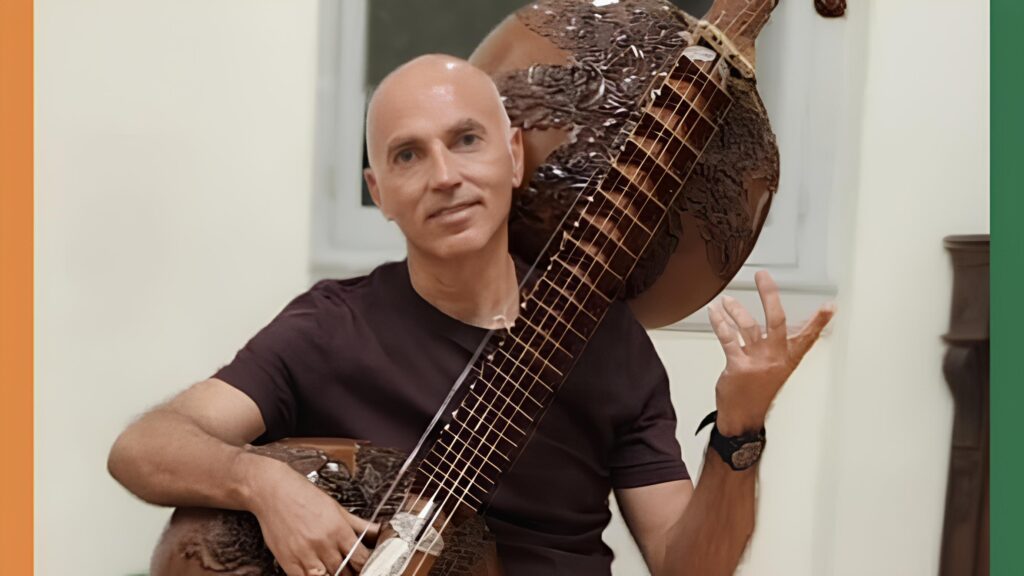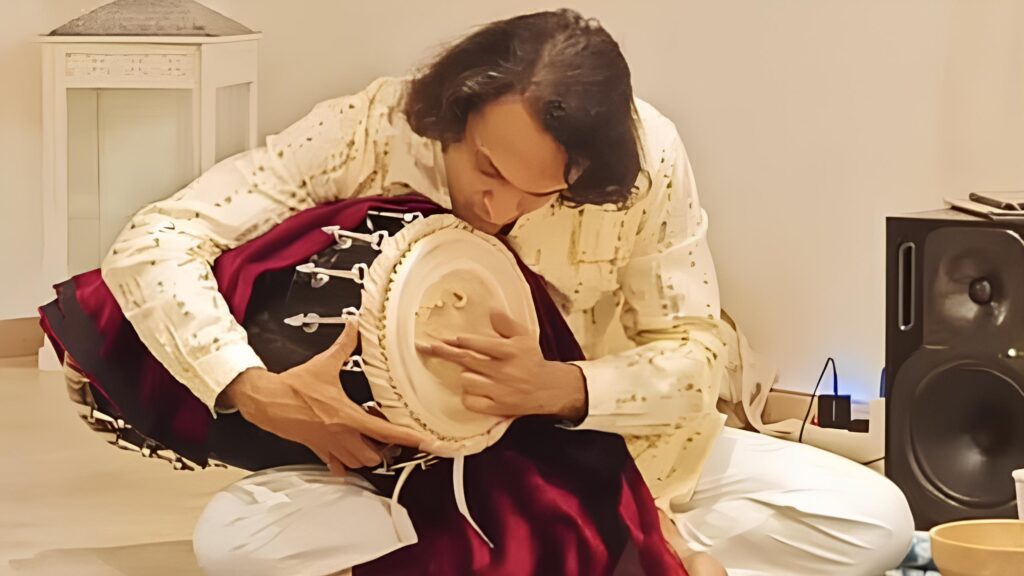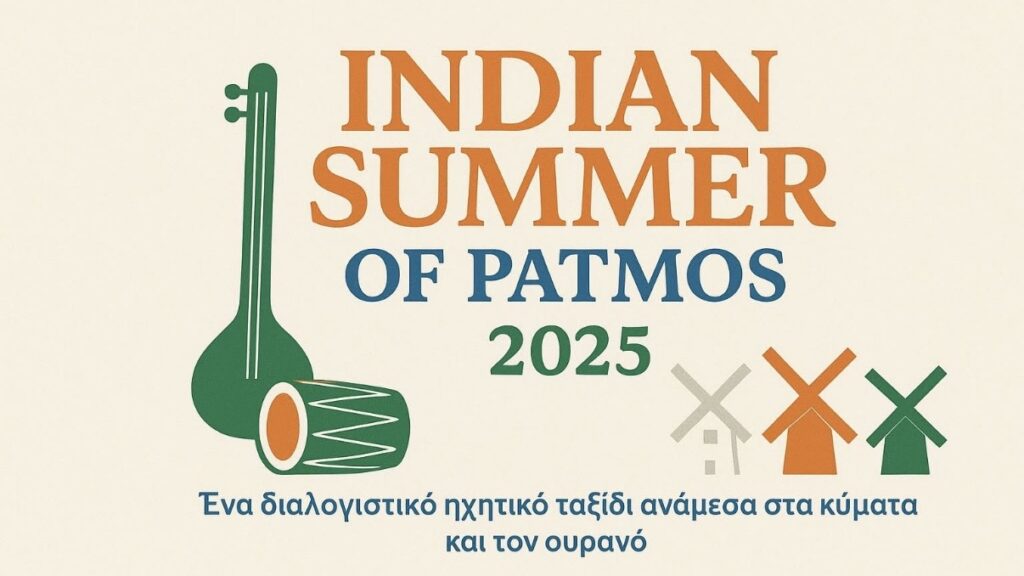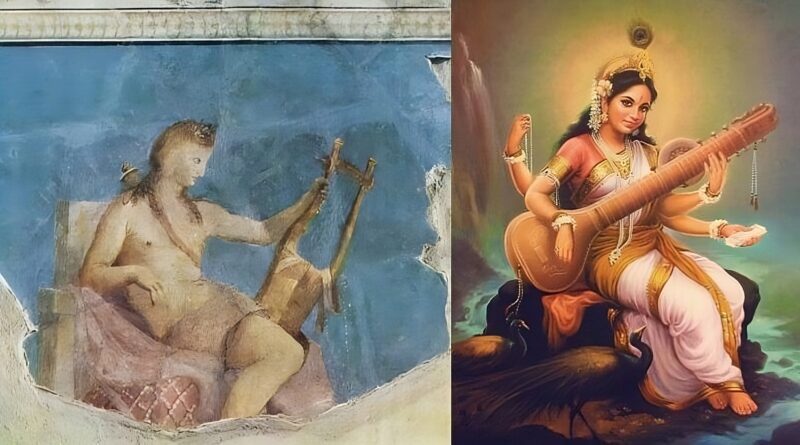Music as a bridge between Greece and India
Nathalie Bossant is organizing the first Drupad concert on the island of Patmos, featuring two of India’s most distinctive and ancient musical instruments—the Rudra Veena and the Pakhawaj—on Saturday, October 11, at 8:00 p.m., at the Patmion Cultural Center.
Indian classical music belongs to the same broad family as Greek, Turkish, and Arabic music—tropical music. In this genre, every vibration and every melodic phrase is based on its relationship with a fundamental note, which acts as the tonal reference point of the scale. Through this foundation, the micro-intervals between sounds are revealed and experienced in a way that opens up a more subtle world of listening. Two traditions that date back to the depths of time, Byzantine music in Greece and Drumpad in India, have the human voice as their main instrument.

Monophonic and rich in micro-molecular melodic lines, they meet in common scales but also in a spiritual dimension, as their sound and lyrics praise the Divine. Both traditions develop rich rhythmic patterns, measuring time in cycles: 7, 9, 10, 12, 14, 16 and many more; sometimes in classical expression and sometimes in everyday life, such as the zeibekiko or the kalamatianos. The apparent simplicity of these musical paths gives rise to an extremely rich web of melody and rhythm. Although they can be heard as entertainment music, they are in essence musical meditation, a subtle therapy through sound.
Common stories echo in both traditions: a divine instrument as a gift to man. Hermes gave the lyre, Apollo’s instrument, to humans, while in India, Shiva created the Rudra Vina, the oldest stringed instrument designed by studying the human body. Just as in Greece we hear about Orpheus, who could soften the walls of a city with his lyre, so in India the Ragas are considered forces that influence the weather and are attributed to specific times of the day or seasons.

From ancient times to the present day, Greece and India share the idea that music and rhythm accompany and express everyday human life. Whether as classical art, religious chanting, or folk music, the root remains the same: a monophonic approach, rich in sounds, modes, and rhythms. The two traditions have much to gain by listening to each other through the voice, the variety of instruments, and the inexhaustible power of percussion.

The relationship between Greece and India is lost in the depths of history and continues to flow naturally to this day. In many ancient texts, we encounter the idea that the beginning of creation started with speech and sound. An old story says that when God asked the soul to inhabit the human body, it refused, saying that it would be a prison. Then God commanded the Angels to sing. The soul, carried away by the dance of sound, entered the body where it remained. Since then, every time the soul hears music, it remembers, even if only for a few moments, that primordial freedom; another sense of time; a journey beyond the narrow confines of the body.
Admission is free.

